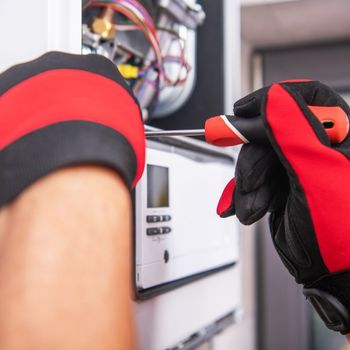Gas Heater Concerns and Precautions
 The majority of homes use gas as a heat source, supplied through a furnace or boiler. Although gas is considered a “clean” natural fuel, carbon monoxide exposure remains a risk and often occurs from a poorly maintained heating system. If you heat your home with gas, here’s what you should know.
The majority of homes use gas as a heat source, supplied through a furnace or boiler. Although gas is considered a “clean” natural fuel, carbon monoxide exposure remains a risk and often occurs from a poorly maintained heating system. If you heat your home with gas, here’s what you should know.
Carbon Monoxide Exposure
Carbon monoxide is an odorless, colorless gas. This substance occurs in response to burning a carbon-based fuel. It can also accumulate in indoor spaces, resulting in harmful – if not fatal – exposure.
When a gas heater is operating correctly, carbon monoxide is vented from the home through a flue, rather than diverted inside. Yet cracks and dirt accumulation in the combustion chamber can cause carbon monoxide to build up in the air.
Common areas to experience cracks are the heat exchanger and furnace door. As such, your gas heater should be routinely inspected and repaired.
Gas Line Leaks
A crack or gas leak can occur along the gas line or involve the gas line. When this happens, you may hear a hissing sound or notice an unpleasant smell like rotten eggs. As you may be exposed to a toxic amount of gas and explosion risks, it’s advised to leave your home immediately and call the fire department to report a gas leak.
Fire Hazards
A gas-powered furnace can pose a fire risk in certain instances, including:
- Accumulation of dust and dirt inside the furnace, which can build up and combust.
- Clutter that’s kept within two feet of the furnace that can ignite and cause a fire to spread.
According to figures from the National Fire Protection Association (NFPA), over 4,000 house fires are attributed to igniting natural gas each year. These incidents are responsible for about 140 injuries, 40 fatalities and over $50 million in property damage annually.
Safely Using a Gas Heater
To lessen your risks for carbon monoxide exposure and fires:
- Regularly maintain your gas heater. This includes annual maintenance to identify hazards and get the necessary repairs done.
- Inspect your heater. Visually inspect your gas furnace or boiler at least once a month, looking for cracks, dents or loose valves. When checking the flame, it should appear blue, rather than yellow or another shade. Any other color can indicate an issue with the combustion process. Additionally, take note of strange sounds.
- Install a carbon monoxide detector. Have these fixtures installed outside all sleeping areas and on every level of your home, excluding the basement and attic. They will notify you when a leak occurs, so you can respond appropriately.
- Know how to shut off the gas valve. Typically located outside of your home, this prevents additional gas from escaping in the event of a leak and can lessen exposure.
- Pay attention to signs of a leak. Since carbon monoxide gas has no odor or color, you’re advised to look for stains and smoke around your heater to indicate a gas leak. Also pay attention to physical symptoms, like fatigue, dizziness, nausea, headaches and chest pain.
Looking to have your gas heater inspected? Contact the HVAC technicians at MJ Fahy & Sons to schedule service today.




